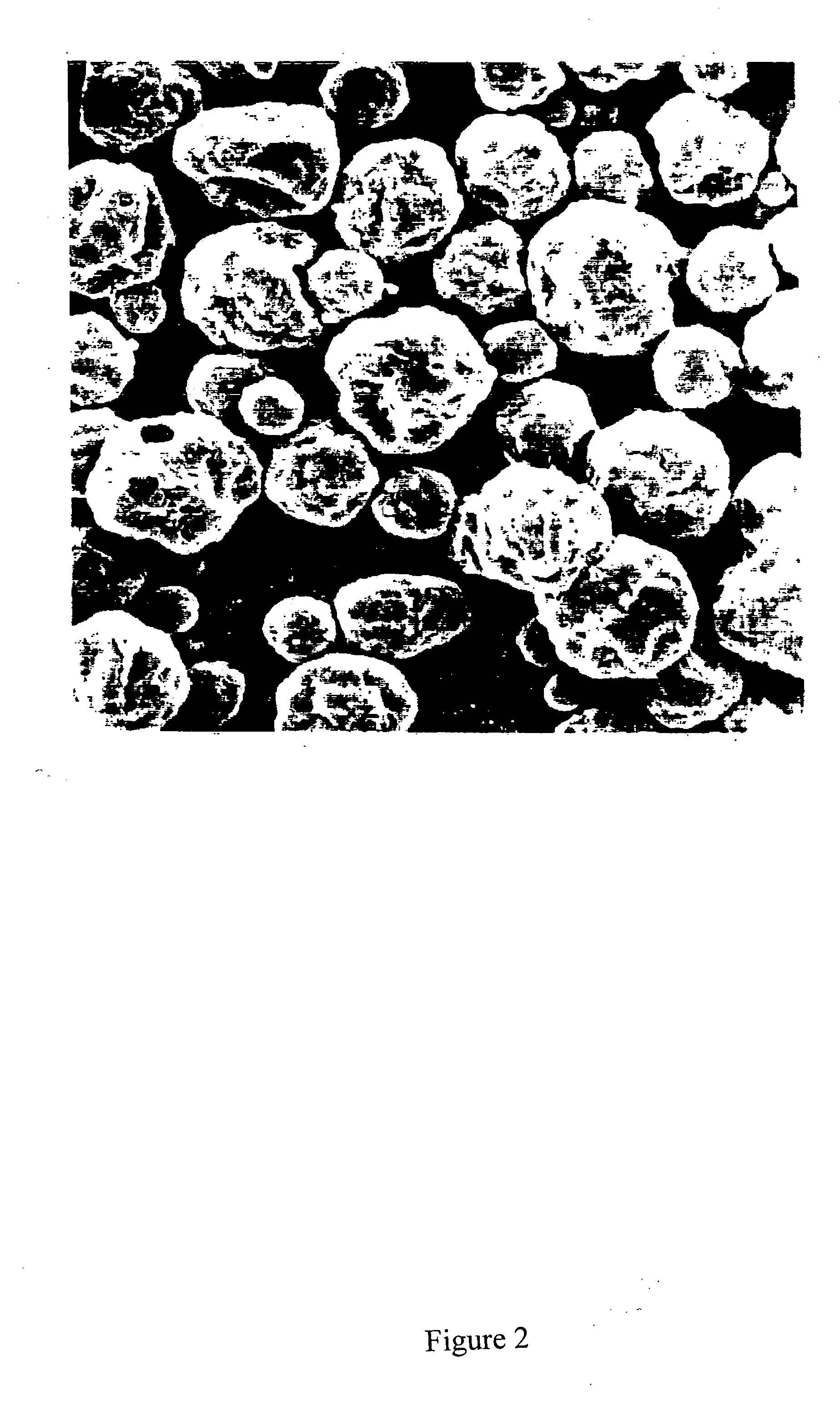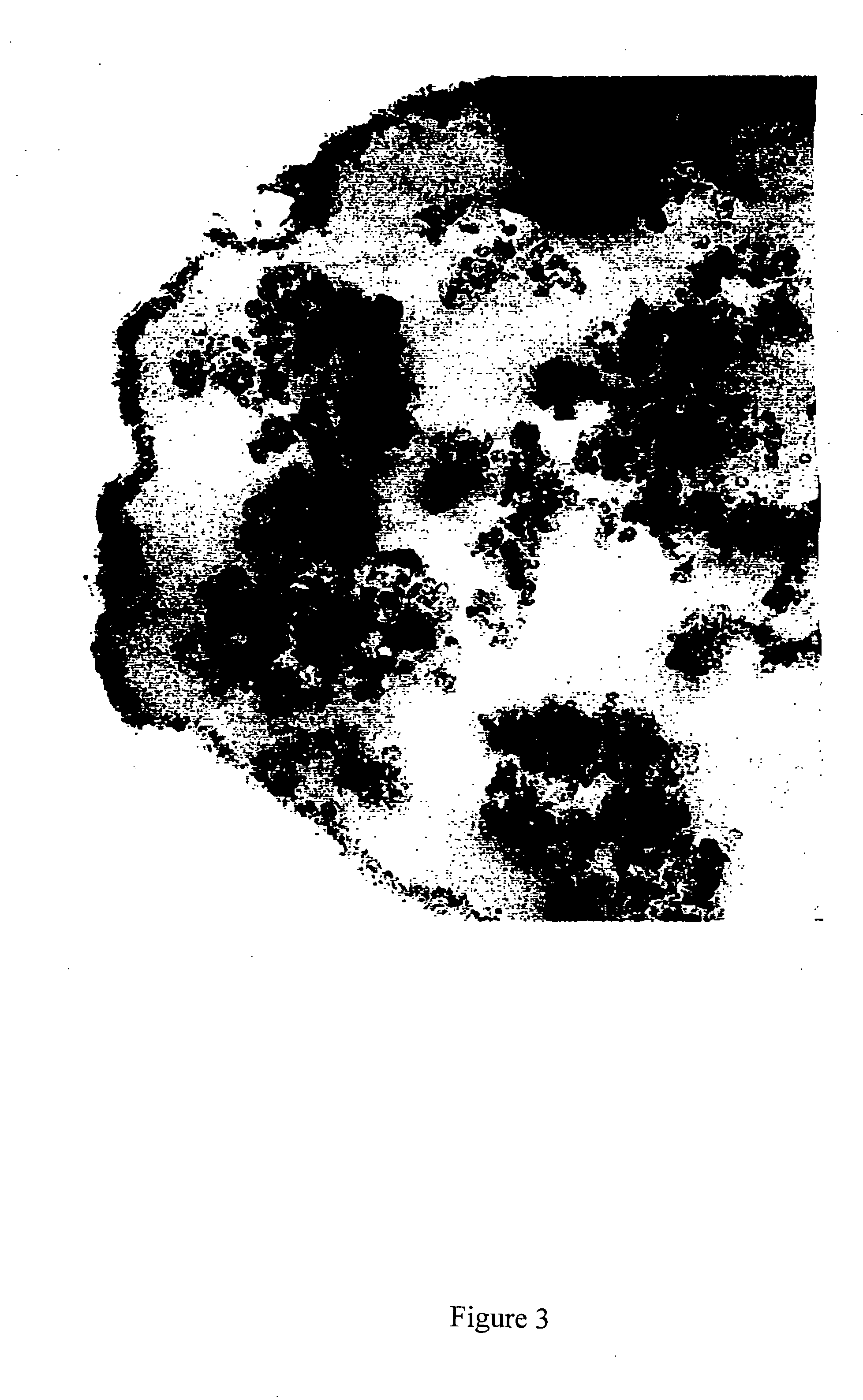Resin particle and process of producing the same
a technology of resin particles and resin suspensions, applied in the field of resin particles, can solve the problems of insufficient masking properties, poor ink retention, and difficult regulation of the shape of resin particles obtained by the solution resin suspension process, and achieve excellent anti-hot offset properties and excellent abrasive properties
- Summary
- Abstract
- Description
- Claims
- Application Information
AI Technical Summary
Benefits of technology
Problems solved by technology
Method used
Image
Examples
production example 1
[0356] Into a reaction vessel equipped with an agitation device and dehydrating device were placed 218 parts of a bisphenol A•EO (2 mol) adduct, 537 parts of a bisphenol A•PO (3 mol) adduct, 213 parts of terephthalic acid, 47 parts of adipic acid, and 2 parts of dibutyltin oxide, and a dehydration reaction was carried out under normal pressure at 230° C. for 5 hours, and then a dehydration reaction was performed under a reduced pressure of 3 mmHg for 5 hours. After cooling to 180° C., and 43 parts of trimellitic anhydride was placed thereto, and then a reaction was carried out under normal pressure for 2 hours to yield [ester resin 1]. [Ester resin 1] had a Tg of 44° C., a number average molecular weight of 2700, a weight average molecular weight of 6500, and an acid value of 25.
production example 2
[0357] Into a reaction vessel equipped with an agitation device and dehydrating device were placed 681 parts of a bisphenol A•EO (2 mol) adduct, 81 parts of a bisphenol A•PO (2 mol) adduct, 275 parts of terephthalic acid, 7 parts of adipic acid, 22 parts of trimellitic anhydride and 2 parts of dibutyltin oxide, and a dehydration reaction was carried out under normal pressure at 230° C. for 5 hours, and then a dehydration reaction was performed under a reduced pressure of 3 mmHg for 5 hours to obtain [ester resin 2]. [Ester resin 2] had a Tg of 54° C., a number average molecular weight of 2200, a weight average molecular weight of 9500, an acid value of 0.8 and a hydroxyl value of 53.
production example 3
[0358] Into an autoclave were placed 407 parts of [ester resin 2] obtained in Production Example 2, 108 parts of IPDI and 485 parts of ethyl acetate, and a reaction was carried out in a sealed condition at 100° C. for 5 hours to obtain [prepolymer solution 1] having an isocyante group at the terminal of the molecule. The NCO content of [prepolymer solution 1] was 1.7%.
PUM
| Property | Measurement | Unit |
|---|---|---|
| Length | aaaaa | aaaaa |
| Length | aaaaa | aaaaa |
| Fraction | aaaaa | aaaaa |
Abstract
Description
Claims
Application Information
 Login to View More
Login to View More - R&D
- Intellectual Property
- Life Sciences
- Materials
- Tech Scout
- Unparalleled Data Quality
- Higher Quality Content
- 60% Fewer Hallucinations
Browse by: Latest US Patents, China's latest patents, Technical Efficacy Thesaurus, Application Domain, Technology Topic, Popular Technical Reports.
© 2025 PatSnap. All rights reserved.Legal|Privacy policy|Modern Slavery Act Transparency Statement|Sitemap|About US| Contact US: help@patsnap.com



